Topics
Category
Era
Albert Lea Commercial Historic District
The original Commercial Historic District of the City of Albert Lea consisted of three square blocks of forty-eight structures built between 1874 and 1928. Featuring iconic examples of American architecture in a variety of styles, including Beaux Arts, Classic Revival, Neoclassical, Art Nouveau, and Craftsman, the district was listed on the National Register of Historic Places in 1987. Sixty-four additional properties added in 2004 extended its period of significance to 1953.
The picturesque village of Albert Lea was platted in 1856. It wasn’t until 1868, however, when the Southern Minnesota Railroad built a line through town, that the community’s development accelerated. Albert Lea became a major railway juncture for southern Minnesota, leading to construction of a depot for the Milwaukee, St. Paul and Pacific Railroad at 606 South Broadway (also in 1868). A modern station replaced the original in 1914. The second structure supported rail networks connecting East–West and North–South crosspoints across the continental United States, giving Albert Lea a role in both local commercial growth and national westward expansion.
Merchants and tradespeople moved to Albert Lea in these decades to market their goods, services, and amusements, building shops along central Broadway Avenue in architectural styles derived from Classicism. The appeal of this aesthetic, in turn, attracted new businesses to town. Prosperous citizens chiseled their names into the facades of their buildings, which inspired the practice in honor of other civic-minded individuals. Among them were Lester Wedge Spicer, who built a drugstore (104 South Broadway) showcasing Italianate masonry in 1874; Adam Wiegand, who erected the Wiegand Building (202 South Broadway) in 1892; and Henry J. Harm, who opened a namesake jewelry store (201 and 211 South Broadway) in 1922. Wiegand chose Romanesque-inspired arches in the monumental Richardsonian style for his building, while Harm hired Minneapolis architects who brought in marble and terra cotta tile for his store.
Broadway was an entertainment hub in tandem with its business center. The Marion Ross Center for the Performing Arts (named for the Albert Lea-born actress known for playing Richie Cunningham’s mother on “Happy Days”) was built at 147 North Broadway between 1909 and 1910. The nearby Bessesen Opera House/Rivoli Theatre (224 South Broadway) was commissioned in 1916 by Dr. William Bessesen to showcase the singing talents of his wife, the opera singer Beatrice Gjertsen Bessesen. An international operatic sensation, Prima Donna Bessesen taught voice lessons in an upper floor studio of an adjacent Arts and Crafts and Art Nouveau building. The theater features Renaissance palace-style design and triptych-like arches spanning three upper storeys.
Before the 1930s, Broadway Avenue was intersected by a series of unpaved streetways and boardwalks at Clark, William, College, and Pearl streets, as well as at Water Street (renamed Marion Ross Street in 2021). Though many roads remained unpaved, the area flourished. A 1902 grant from philanthropist Andrew Carnegie funded the 1903 construction of a red brickwork library at 147 West College Street designed by Schick and Ross of La Crosse, Wisconsin. The Beaux Arts building is defined by its signature angled entryway, a design adaptation to accommodate the site. The Classical Revival First National Bank, completed in the same year, originally welcomed customers through the main entrance on William Street; this entryway was reconfigured onto 139 South Broadway in 1920. Concrete replaced the original wood-block pavement outside the bank in 1935.
Most of Albert Lea’s buildings were made of natural materials before the 1910s. Crews brought in stone from quarries in the upper Minnesota and Mississippi river valleys, including Mankato; clay was used in brickwork, and to replicate marble. After World War I, industrial materials like steel and glass replaced natural ones, bringing the architectural past into a new context reflecting local taste and national identity.
When historians added Albert Lea’s Commercial Historic District to the National Register in 1987, they outlined a period of significance for both contributing and non-contributing structures from 1874 to 1928. In 2004, they extended that timeframe through 1953 to include original architectural structures that have not been physically altered, embracing the late-nineteenth through mid-twentieth centuries. The National Register listing secures the district’s legacy as a well-preserved collection of American architecture in the Renaissance, Neoclassical, Romanesque, and modern styles.
Bibliography
“About Freeborn County.”
https://www.freeborncountyhistory.org
“Albert Lea Historical Downtown Walking Tour.” PocketSights.
https://pocketsights.com/tours/tour/Albert-Lea-Albert-Lea-Historical-Downtown-Walking-Tour-8565
City of Albert Lea. “The Early Settlement of Albert Lea.”
https://cityofalbertlea.org/history
City of Albert Lea. “Theatre’s History Continues to Unfold.”
https://cityofalbertlea.org/theaterhistory
“City of Albert Lea: National Historic Commercial District Architectural Guidelines for Historic Preservation Heritage Preservation Commission.”
https://cityofalbertlea.org/wp-content/uploads/10-31-11HPC_web.pdf
Clemens, Kevin. Carnegie Libraries of Minnesota. Lake Elmo, MN: Demontreville Press, Inc., 2011.
Curtiss-Wedge, Franklyn. History of Freeborn County, Minnesota. Chicago: H. C. Cooper, Jr., 1911.
https://archive.org/details/historyoffreebor00curt
Freeborn County Historical & Genealogical Societies. Freeborn County Heritage. Dallas: Taylor Publishing, 1988.
Gebhard, David, and Tom Martinson. A Guide to the Architecture of Minnesota. Minneapolis: University of Minnesota Press, 1988.
https://archive.org/details/guidetoarchitect0000prof
Glover, Maury. “Actress Marion Ross of ‘Happy Days’ Honored with Statue in Minnesota Hometown.” Fox 9, July 3, 2021.
https://www.fox9.com/news/marion-ross-of-happy-days-honored-with-bronze-statue-minnesota-hometown
Guerro, Alex. “Discover the Rich History of Albert Lea’s Historic District.” Albert Lea Tribune, May 31, 2022.
https://www.albertleatribune.com/2023/05/plaques-to-highlight-history-downtown-throughout-the-county
Hardman, Ray. “Sculptor Chad Fisher Brings Historic Methods and a Bronze Foundry to Old Lyme.” Connecticut Public Radio, June 27, 2024.
https://www.ctpublic.org/news/2024-06-27/chad-fisher-sculptor-old-lyme-connecticut
Historic U.S. Highway 65: Old Route at Albert Lea (Broadway and William Street).
https://deadpioneer.com/routes/US65/articles/williamst/wililamst.htm
History Center of Freeborn County.
https://www.lovehistory.org
MacDonald & Mack, architects. “Albert Lea Commercial Historic District Design Guidelines,” March 6, 2024.
https://cityofalbertlea.org/wp-content/uploads/Albert-Lea-Design-Guidelines_2024.pdf
Minnesota Department of Natural Resources. “Wildflowers of Minnesota’s Northern Prairies.”
https://files.dnr.state.mn.us/assistance/nrplanning/community/roadsidesforwildlife/prairie-flower-guide.pdf
Neill, Edward D. History of Freeborn County. Minneapolis: Minnesota Historical Company, 1882.
https://archive.org/details/historyoffreebor00neil/page/n5/mode/2up
“The neoclassical-style, one-time First National bank in downtown Albert Lea, Minnesota.” Photograph by Carol M. Highsmith (LC-DIG-highsm- 59807), Library of Congress.
https://www.loc.gov/item/2020723310
Roberts, Norene A. “Albert Lea Commercial Historic District.” National Register of Historic Places nomination form, January 30, 1986. State Historic Preservation Office, St. Paul.
https://npgallery.nps.gov/GetAsset/17e94dba-e5b9-4253-8302-eca6f8ff00a7
United States Department of the Interior. National Park Service Form 10-900 (National Register of Historic Places continuation sheet).
https://greenstep.pca.state.mn.us/sites/default/files/5.1AlbertLeaActionFile.pdf
Stultz, Sarah. “Public Invited to Street Renaming in Honor of Marion Ross.” Albert Lea Tribune, May 5, 2021.
https://www.albertleatribune.com/2021/05/public-invited-to-street-renaming-in-honor-of-marion-ross
Related Resources
Primary
Library of Congress. Historical American Buildings Survey.
https://www.loc.gov/pictures/collection/hh
Secondary
Ohman, Doug. Libraries of Minnesota. St. Paul: Minnesota Historical Society, 2011.
Register, Cheri. Packinghouse Daughter: A Memoir. St. Paul: Minnesota Historical Society, 2000.
Related Images
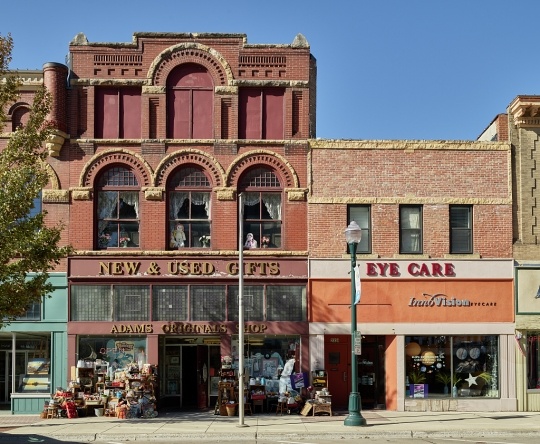
Buildings in the Albert Lea Commercial Historic District
Holding Location
More Information
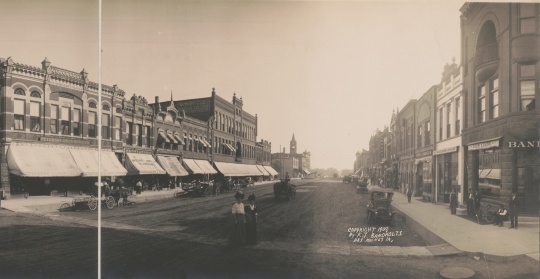
Detail of a panoramic view of downtown Albert Lea
Holding Location
More Information
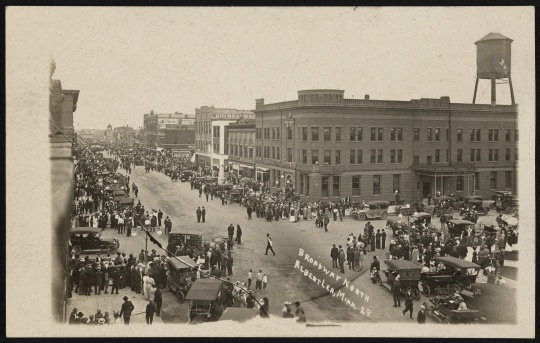
North Broadway Avenue in Albert Lea
Holding Location
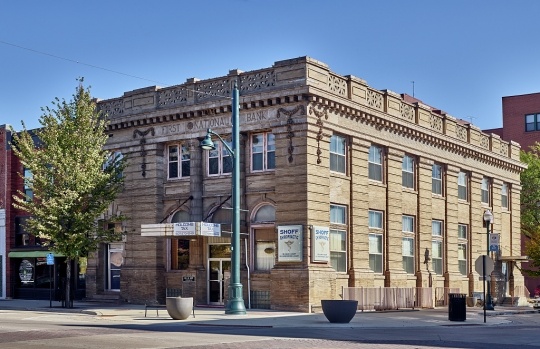
First National Bank, Albert Lea
Holding Location
More Information
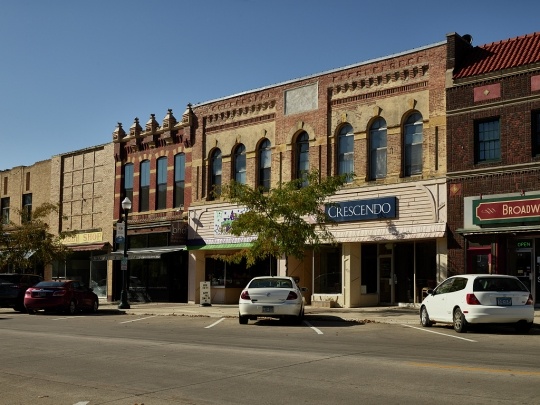
Broadway Avenue businesses in the Albert Lea Commercial Historic District
Holding Location
More Information
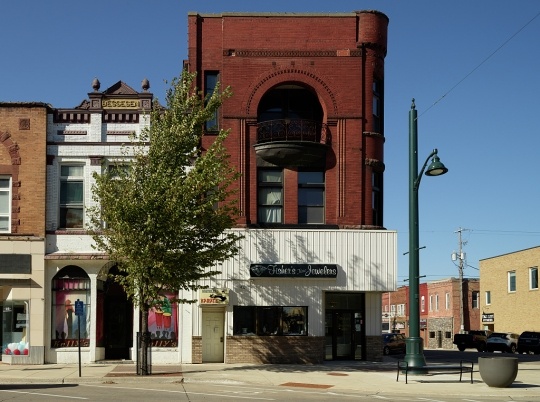
208 and 202 South Broadway Avenue, Albert Lea
Holding Location
More Information
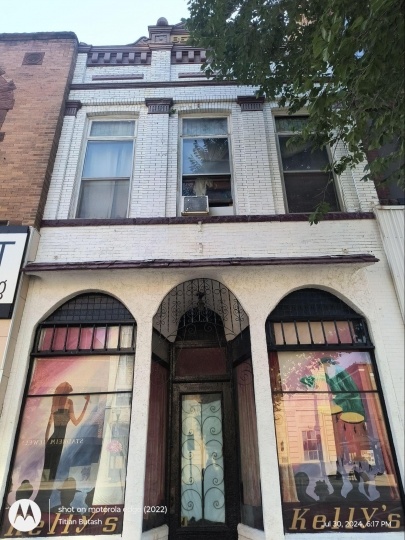
208 South Broadway Avenue, Albert Lea
All rights reserved
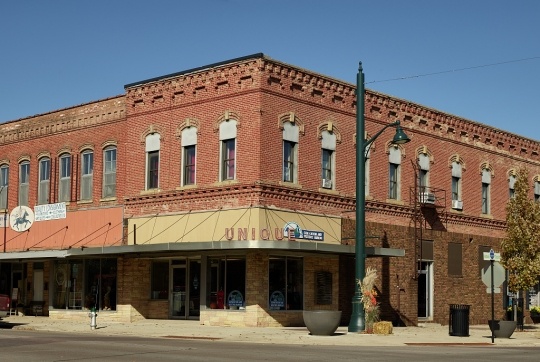
Albert Lea Visitors’ Bureau
Holding Location
More Information
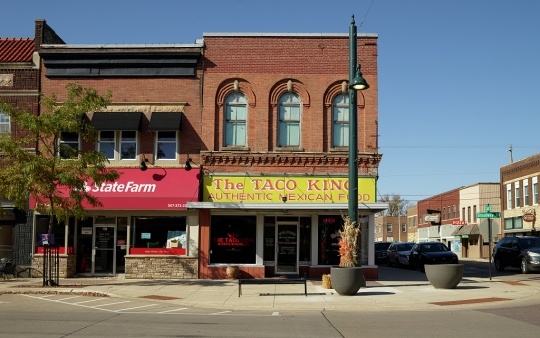
Businesses in the Albert Lea Commercial Historic District
Holding Location
More Information
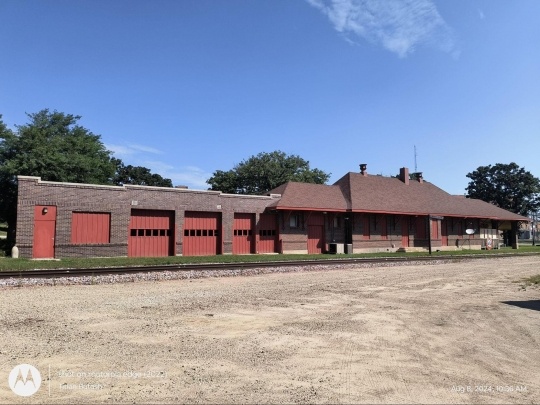
Albert Lea Train Station
All rights reserved
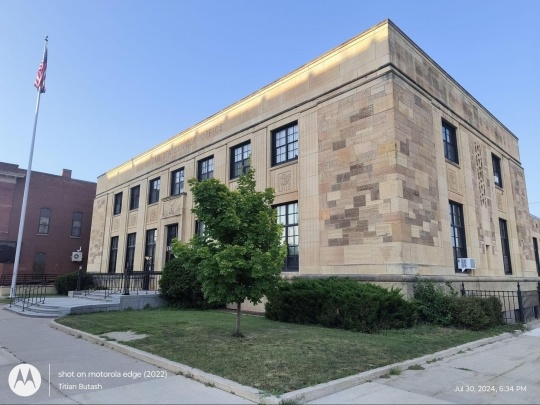
Albert Lea Post Office
All rights reserved
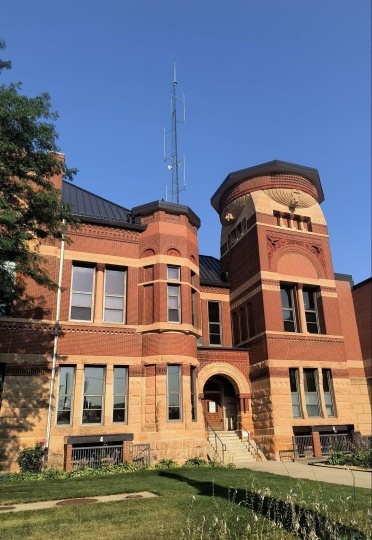
Freeborn County Courthouse
All rights reserved
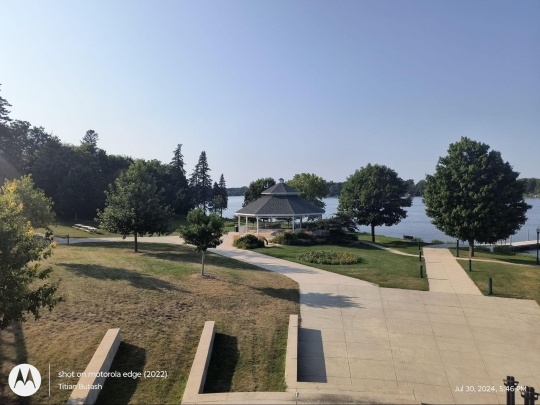
Fountain Lake Park, Albert Lea
All rights reserved
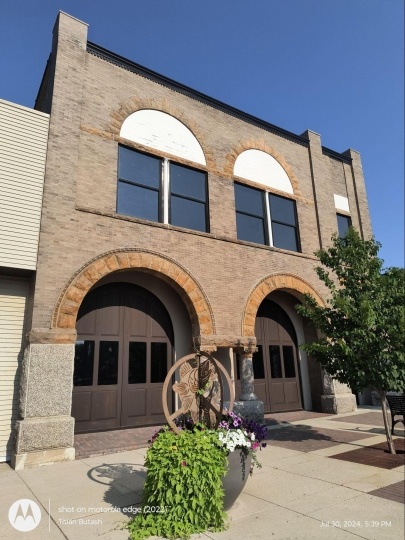
Albert Lea City Hall (original)
All rights reserved
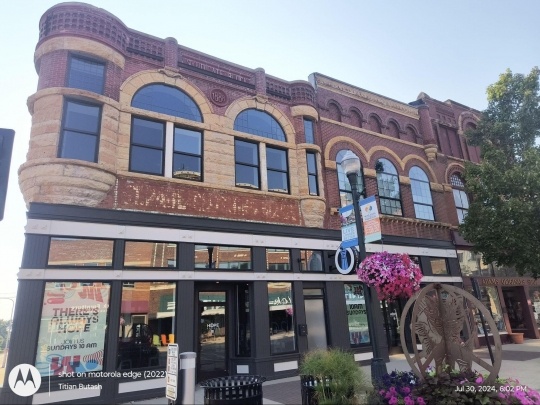
Syndicate Block, Albert Lea
All rights reserved
More Information
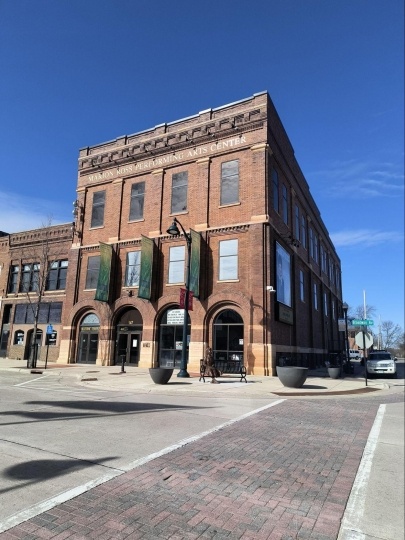
Marion Ross Performing Arts Center
All rights reserved
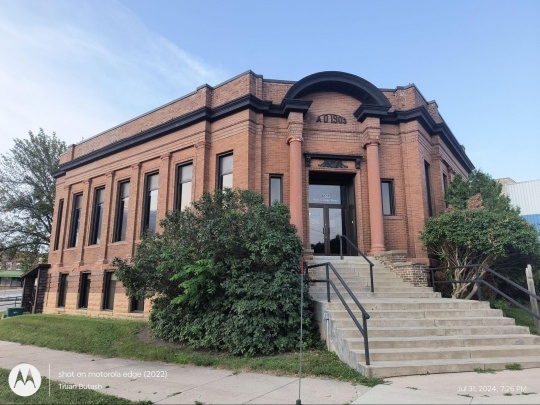
Albert Lea Carnegie Library
All rights reserved
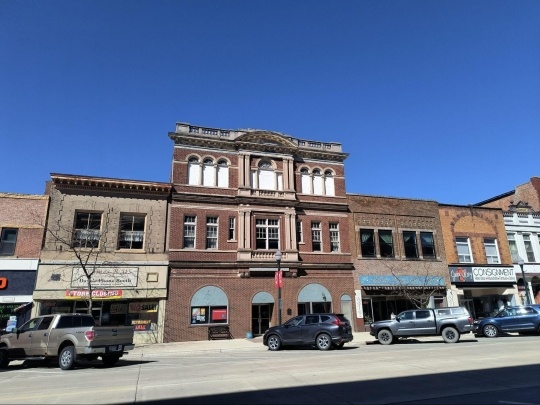
Bessesen Building and surrounding buildings
All rights reserved
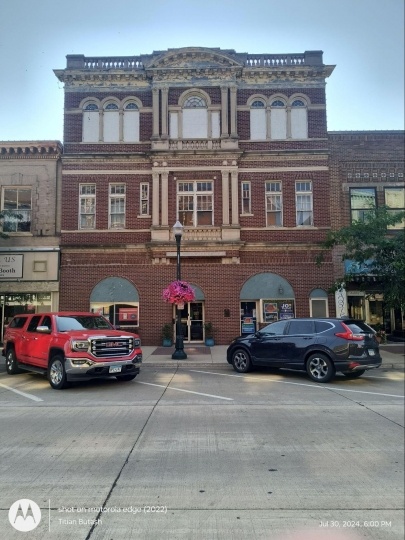
Bessesen Building
All rights reserved
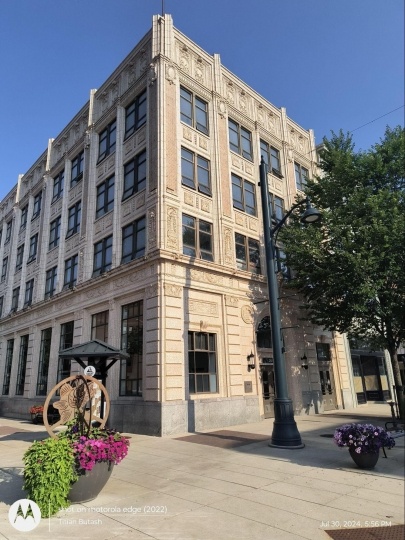
Albert Lea State Bank Building
All rights reserved
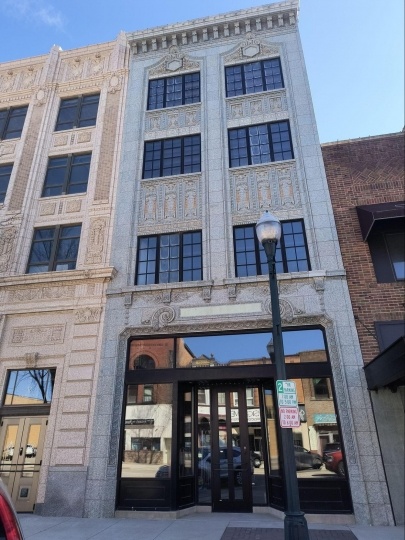
211 South Broadway Avenue, Albert Lea
All rights reserved
Related Articles
Turning Point
In 1874, Lester Wedge Spicer builds a drugstore at 104 South Broadway in Albert Lea showcasing Italianate masonry. The building’s sophisticated classical style inspires other entrepreneurs to build structures of their own.
Chronology
1855
1856
1856
1859
1868
1878
1887
1902
1903
1914
1936
1937
1987
2004
Bibliography
“About Freeborn County.”
https://www.freeborncountyhistory.org
“Albert Lea Historical Downtown Walking Tour.” PocketSights.
https://pocketsights.com/tours/tour/Albert-Lea-Albert-Lea-Historical-Downtown-Walking-Tour-8565
City of Albert Lea. “The Early Settlement of Albert Lea.”
https://cityofalbertlea.org/history
City of Albert Lea. “Theatre’s History Continues to Unfold.”
https://cityofalbertlea.org/theaterhistory
“City of Albert Lea: National Historic Commercial District Architectural Guidelines for Historic Preservation Heritage Preservation Commission.”
https://cityofalbertlea.org/wp-content/uploads/10-31-11HPC_web.pdf
Clemens, Kevin. Carnegie Libraries of Minnesota. Lake Elmo, MN: Demontreville Press, Inc., 2011.
Curtiss-Wedge, Franklyn. History of Freeborn County, Minnesota. Chicago: H. C. Cooper, Jr., 1911.
https://archive.org/details/historyoffreebor00curt
Freeborn County Historical & Genealogical Societies. Freeborn County Heritage. Dallas: Taylor Publishing, 1988.
Gebhard, David, and Tom Martinson. A Guide to the Architecture of Minnesota. Minneapolis: University of Minnesota Press, 1988.
https://archive.org/details/guidetoarchitect0000prof
Glover, Maury. “Actress Marion Ross of ‘Happy Days’ Honored with Statue in Minnesota Hometown.” Fox 9, July 3, 2021.
https://www.fox9.com/news/marion-ross-of-happy-days-honored-with-bronze-statue-minnesota-hometown
Guerro, Alex. “Discover the Rich History of Albert Lea’s Historic District.” Albert Lea Tribune, May 31, 2022.
https://www.albertleatribune.com/2023/05/plaques-to-highlight-history-downtown-throughout-the-county
Hardman, Ray. “Sculptor Chad Fisher Brings Historic Methods and a Bronze Foundry to Old Lyme.” Connecticut Public Radio, June 27, 2024.
https://www.ctpublic.org/news/2024-06-27/chad-fisher-sculptor-old-lyme-connecticut
Historic U.S. Highway 65: Old Route at Albert Lea (Broadway and William Street).
https://deadpioneer.com/routes/US65/articles/williamst/wililamst.htm
History Center of Freeborn County.
https://www.lovehistory.org
MacDonald & Mack, architects. “Albert Lea Commercial Historic District Design Guidelines,” March 6, 2024.
https://cityofalbertlea.org/wp-content/uploads/Albert-Lea-Design-Guidelines_2024.pdf
Minnesota Department of Natural Resources. “Wildflowers of Minnesota’s Northern Prairies.”
https://files.dnr.state.mn.us/assistance/nrplanning/community/roadsidesforwildlife/prairie-flower-guide.pdf
Neill, Edward D. History of Freeborn County. Minneapolis: Minnesota Historical Company, 1882.
https://archive.org/details/historyoffreebor00neil/page/n5/mode/2up
“The neoclassical-style, one-time First National bank in downtown Albert Lea, Minnesota.” Photograph by Carol M. Highsmith (LC-DIG-highsm- 59807), Library of Congress.
https://www.loc.gov/item/2020723310
Roberts, Norene A. “Albert Lea Commercial Historic District.” National Register of Historic Places nomination form, January 30, 1986. State Historic Preservation Office, St. Paul.
https://npgallery.nps.gov/GetAsset/17e94dba-e5b9-4253-8302-eca6f8ff00a7
United States Department of the Interior. National Park Service Form 10-900 (National Register of Historic Places continuation sheet).
https://greenstep.pca.state.mn.us/sites/default/files/5.1AlbertLeaActionFile.pdf
Stultz, Sarah. “Public Invited to Street Renaming in Honor of Marion Ross.” Albert Lea Tribune, May 5, 2021.
https://www.albertleatribune.com/2021/05/public-invited-to-street-renaming-in-honor-of-marion-ross
Related Resources
Primary
Library of Congress. Historical American Buildings Survey.
https://www.loc.gov/pictures/collection/hh
Secondary
Ohman, Doug. Libraries of Minnesota. St. Paul: Minnesota Historical Society, 2011.
Register, Cheri. Packinghouse Daughter: A Memoir. St. Paul: Minnesota Historical Society, 2000.






















